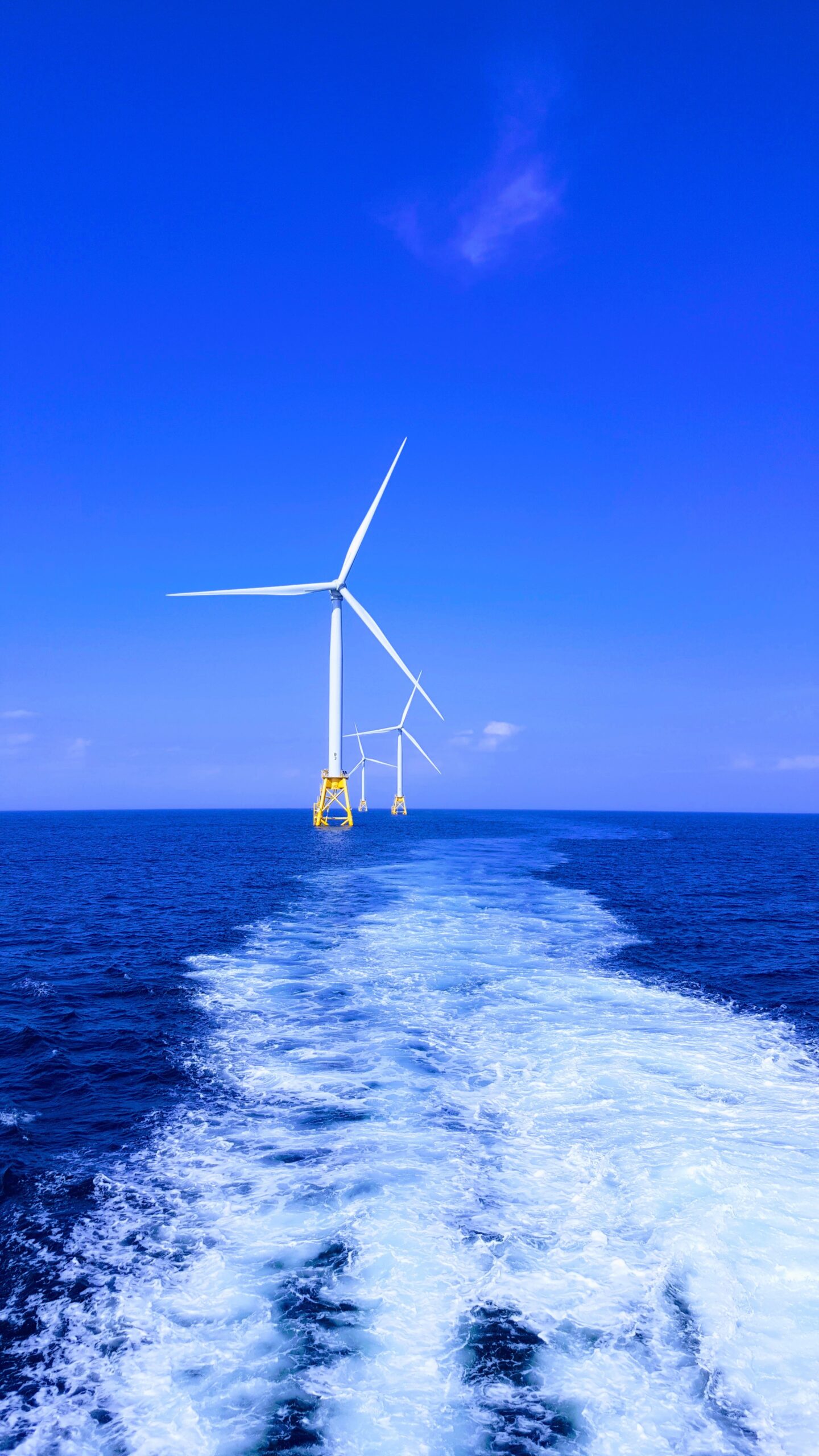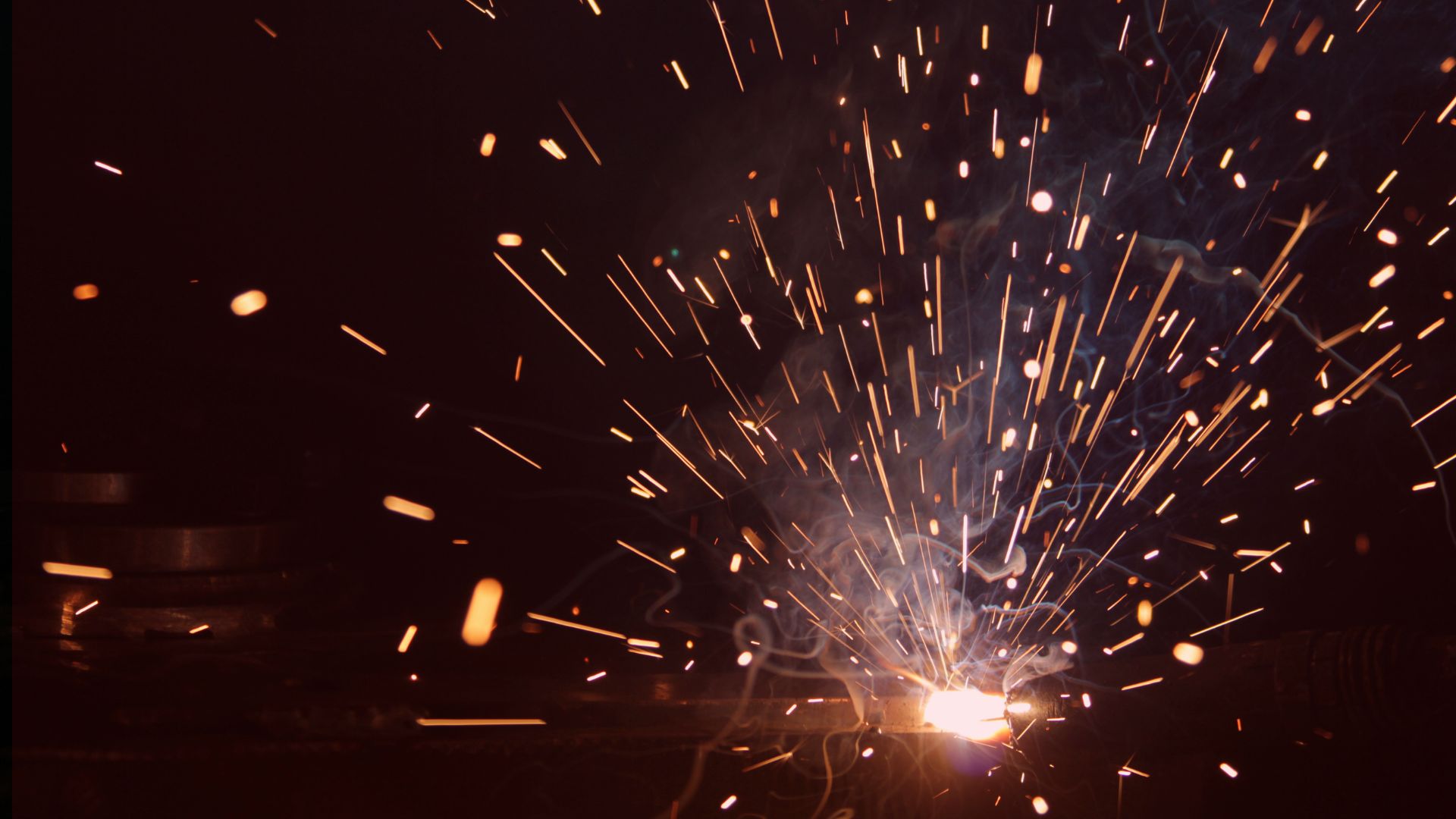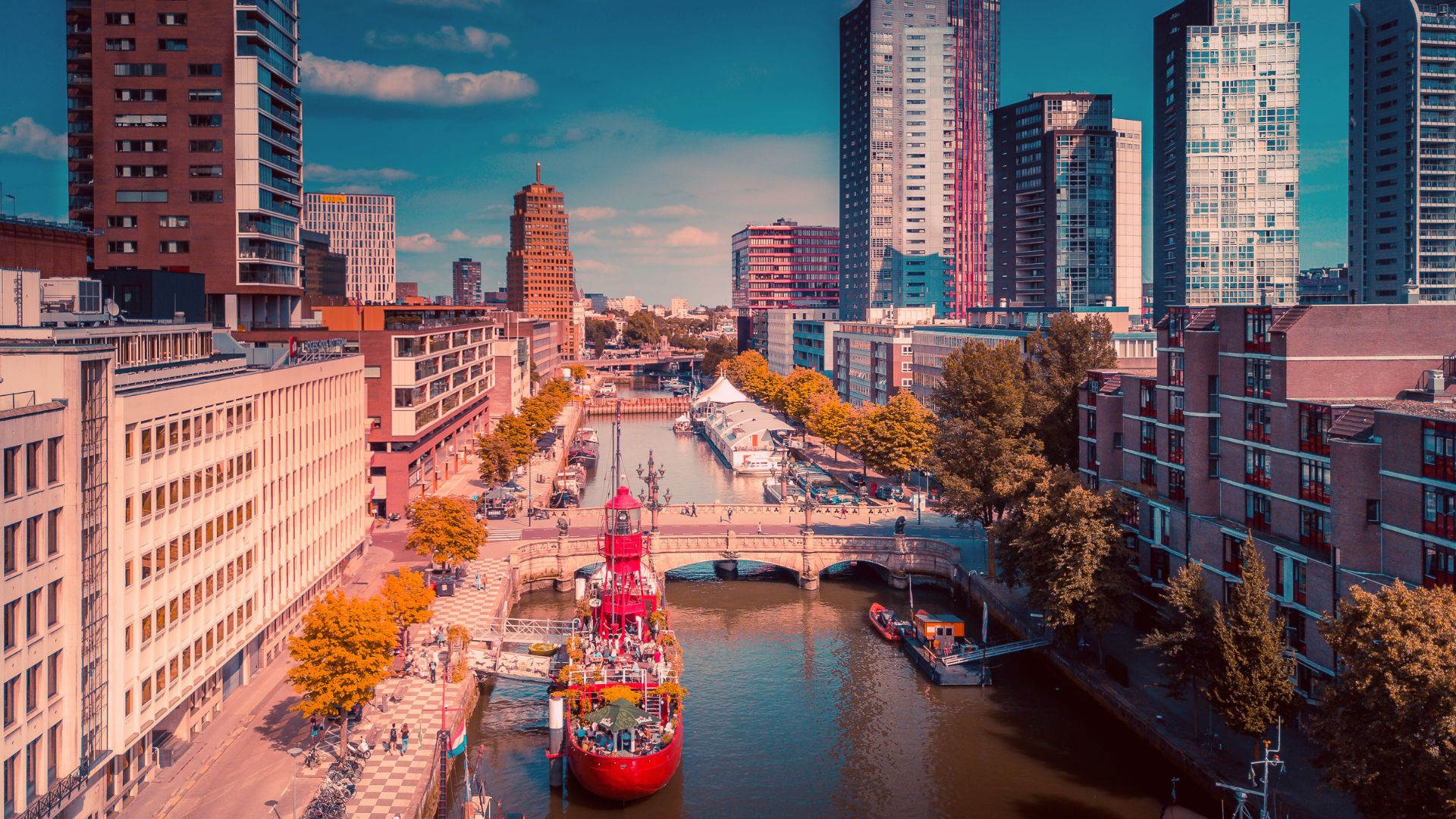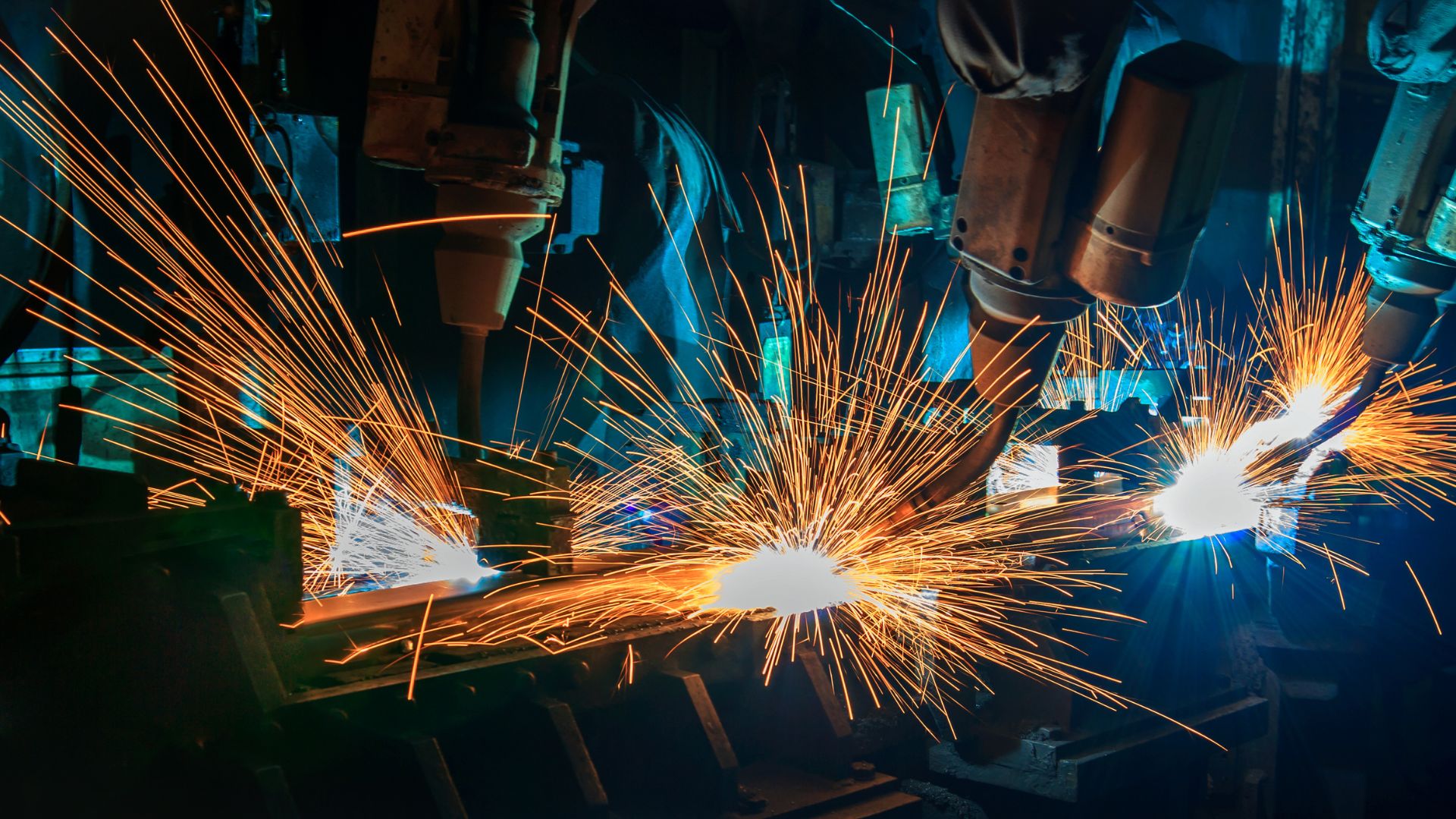Windtoren Fabricage & Productielijnen

Heeft u zich ooit afgevraagd wanneer en hoe hernieuwbare energie van eenvoudige windmolens op boerderijen, naar windmolens die het landschap op velden domineren… naar drijvende offshore windturbines is gegaan?
De geschiedenis van het gebruik van wind als hernieuwbare energiebron is fascinerend. Het eerste type werkende molen in het Verenigd Koninkrijk dateert van 1665 toen het werk aan de Outwood Mill in Surrey begon. Het is de langst werkende windmolen in Groot-Brittannië die windenergie gebruikt om granen mechanisch tot meel te vermalen.
In dit tijdperk waren er vier soorten windmolens. Verzonken palenmolens, windmolens met een open schraag, korenmolens en torenmolens. De meeste werden gebruikt om graan te malen of als waterpomp om mechanisch water naar het vee te brengen.
Pas in 1877 werd ’s werelds eerste windturbine die elektriciteit produceerde gebouwd in Schotland door een elektrotechnisch ingenieur. Prof. James Blyth van het voormalige Anderson’s College of Glasgow, nu Strathclyde University. De windtoren van Prof. Blyth was iets meer dan 33 feet hoog. De windturbine was de mechanische krachtbron die dynamo-energie gebruikte om zijn vakantiewoning in Marykirk te verlichten. Overtollige stroom werd naar accumulatoren gestuurd, en de overtollige stroom werd aan de stad aangeboden om de straatverlichting van stroom te voorzien. De inwoners weigerden dit vanwege bijgeloof, want in die tijd dachten de mensen dat elektriciteit het “werk van de duivel” was.
Het Moderne Tijdperk van de Productie van Windmolens
In de loop der jaren, toen de kennis groeide en de vraag naar alternatieve energiebronnen toenam, toonden analyses en tests aan dat windmolens en turbines betrouwbare bronnen van elektriciteit zijn door kinetische energie van de wind om te zetten in roterende mechanische energie. Een generator zet deze roterende energie vervolgens om in elektriciteit. Uit analyses blijkt dat het proces een optimale efficiëntie van 59,26% (bekend als de Betz-limiet) heeft, terwijl de huidige windtorens en turbines een efficiëntie van 35% tot 45% halen bij het omzetten van windenergie in bruikbare energie.
De huidige windturbines zijn veel groter dan die van decennia geleden, ze kunnen megawatts per turbine produceren en steden van stroom voorzien in plaats van een rij straatlantaarns.
De gemiddelde grootte van Europese windturbines van 3 MW hebben rotorbladen van 50 tot 100 feet lang, die tot 1500 huizen per turbine van stroom kunnen voorzien. Grotere windturbines van 7,5 MW (de grootste tot nu toe) hebben bladen van 60 meter lang. Qua hoogte is de hoogste onshore Britse windturbine 125 meter hoog. De 8,4 MW offshore turbine voor de kust van Aberdeen is met 191 meter nog groter.
De toegenomen vraag naar hernieuwbare energie is een enorme drijvende kracht achter de grootschalige productie van windmolenparken in Europa en de rest van de wereld. Van alle soorten groene energie is windenergie verreweg het meest efficiënt wat betreft productie- en operationele kosten.
Alleen al in Europa zijn er 4.149 windturbines van 94 windparken aangesloten op het elektriciteitsnet in 11 landen, die 15.780 MW genereren. Deze aantallen zullen nog toenemen, aangezien het Akkoord van Parijs de ambitieuze doelstelling bevat om tegen 2030 32% van de energie op te wekken uit hernieuwbare bronnen.
Deze aantallen zullen nog toenemen, aangezien het Akkoord van Parijs de ambitieuze doelstelling bevat om tegen 2030 32% van de energie op te wekken uit hernieuwbare bronnen.
Windturbines worden steeds hoger omdat de wind op grotere hoogte sneller beweegt, waardoor de turbines meer van die kinetische energie kunnen opvangen.
Om het grootste deel van de bruikbare energie op te vangen, begrijpen exploitanten van windparken het belang van fabricagevereisten.
De Fabricagevereisten voor de Productie van Windtorens en Windturbines
Fabrikanten zijn zich bewust van de noodzaak om op grote schaal hernieuwbare energie uit windturbines te halen. Niet het soort dat één huis van energie voorziet, maar het soort windturbines dat een huis in één omwenteling van energie kan voorzien.
Dit vraagt om een robuust fabricageproces dat op schaal kan worden uitgevoerd. Of het nu gaat om windmolenparken op land of een offshore turbine zoals de enorme turbine van 8,4 MW… er zijn zware machines nodig.
Om zulke torenhoge technische hoogstandjes te maken, wordt zwaar staal gebruikt in kleinere maten stalen buizen die meestal 9ft lang zijn en 8-15ft in diameter. Deze worden in fabrieken verwerkt langs een productie-/productielijn waarbij in verschillende stadia conventioneel en geavanceerd laswerk wordt uitgevoerd.
Over Productielijnen voor Windtorens
Productielijnen voor windmolens gebruiken een verscheidenheid aan machines voor automatisering als een manier om de kosten te beheersen en de las- en productiekwaliteit te verhogen. De machines die gebruikt worden in een productielijn voor de windenergiesector hebben meerdere types. Een blikwals kan gebruikt worden om metalen platen van verschillende diktes tot stalen buizen te vormen. Een lasrotator kan dan gebruikt worden om het blik mechanisch te draaien, terwijl een andere machine een externe omtreklas aanbrengt om de buis af te dichten. Bestuurders regelen de rotatiesnelheid en controleren de kwaliteit van de lasnaad. De automatisering van de lasprocessen voor zowel omtrek- als langslassen stelt windturbinefabrikanten in staat om de productie en kwaliteit te verhogen en tegelijkertijd de overheadkosten te verlagen. Zodra de buizen verzegeld zijn, kunnen de positioneermachines en draaitafels gebruikt worden als onderdeel van de productielijn voor verschillende lasprocessen, voordat ze mechanisch verplaatst worden naar een montagebed, waar ze vervolgens allemaal geassembleerd kunnen worden, klaar voor transport naar de plaats van bestemming.De video hieronder toont de opstelling en demonstratie van hoe een productielijn voor windturbines werkt.
Waar Lasautomatisering in het Proces Past
Lasrotators worden gebruikt om grote buizen te draaien, waardoor lassers in alle gebieden onder elke hoek van elke doorsnede van de buis kunnen werken. Ze kunnen zowel langsnaden als omtrek lassen. Geautomatiseerde systemen voor onderpoederlassen maken het lassen van stompnaden in meerdere gangen mogelijk met een minimale werkbelasting voor de operator. Het lassen van de buitenkant van de buizen gebeurt met een laskop die aan een kolom en giek hangt, waardoor alle processen voor het lassen van de buitenkant worden geautomatiseerd.
Naarmate de hoogte van windturbines toeneemt, worden dikkere staalsoorten gebruikt in alle onderdelen van het productieproces. Hoe dikker het staal is, hoe intensiever het lasproces is voor de operator, wat vaak tot vermoeidheid leidt.
De constructie van windturbines is geavanceerd en competitief. Processen moeten zowel onsite als offsite geautomatiseerd worden.
Redrock Automation levert de machines die windturbinefabrikanten nodig hebben om hun werkzaamheden te stroomlijnen, de vaardigheid en efficiëntie van alle lasfasen te verhogen en tegelijkertijd de vermoeidheid van de operator te verminderen. Bovendien kunnen operators hun oog voor detail op het proces houden, waardoor lassen van topkwaliteit constant gewaarborgd blijft.
Waar Wij passen in de Windtoren Productieprocessen
Als experts in lasautomatisering biedt Redrock een reeks diensten aan windturbinefabrikanten, te beginnen met een gespecialiseerd advies na een eerste RFQ.
Vanaf het begin bespreken we de projectdoelen en ontdekken dan waar we kunnen helpen.
Een aantal van de gebieden waar ons werk betrekking op heeft zijn:
- Adviezen op locatie
- Levering en installatie van apparatuur om de gezondheids- en veiligheidsnormen te verbeteren
- Een reeks gespecialiseerde lasmaterialen leveren om de verwerkingscapaciteit te verhogen
- Operators trainen in het vakkundig gebruik van machines
- Dienst verlenen en onderhoud plegen aan lasapparatuur, hetzij in het kader van een huurovereenkomst of gedekt door een uitgebreide garantie, die beschikbaar is voor onze hele productcatalogus.
Ons doel is altijd hetzelfde – oplossingen bieden om aan de bedrijfsdoelstellingen te voldoen. Soms rollen we kant-en-klare oplossingen uit onze werkplaats, klaar om te installeren en operators op te leiden. Andere keren zijn projecten zo uniek dat ons engineeringteam machines op maat ontwerpt, die door ons geproduceerd worden om te voldoen aan de eisen van specifieke projecten waarvoor machines op maat gemaakt moeten worden.
Onze Rol is die van Partners
… Partners om lasautomatiseringsapparatuur te leveren die aan de bedrijfsdoelstellingen voldoet en deze overtreft door de productiviteit en arbeidsomstandigheden te verbeteren en vaak met een snelle ROI.
Wij zijn een wereldleider in de productie, levering en installatie van lasautomatiseringsapparatuur dat voldoet aan de hedendaagse vraag naar de productie van robuuste windmolens van zwaar staal.
Wij bieden een volledige dienst aan fabrikanten van windmolens, te beginnen met een adviesgesprek, vervolgens met de levering, installatie, opleiding van operators en onderhoud van ons apparatuur in verhuur of onder onze uitgebreide garantie.
Met vestigingen op strategische locaties over de hele wereld is Redrock de ONE STOP SHOP voor windturbinefabrikanten. Een bron voor geautomatiseerde lasoplossingen.




